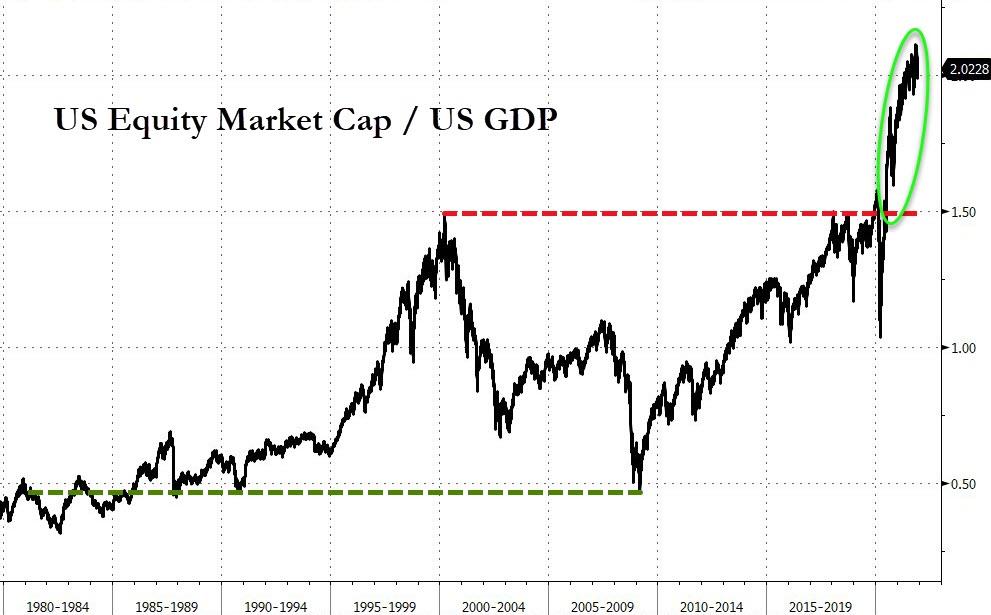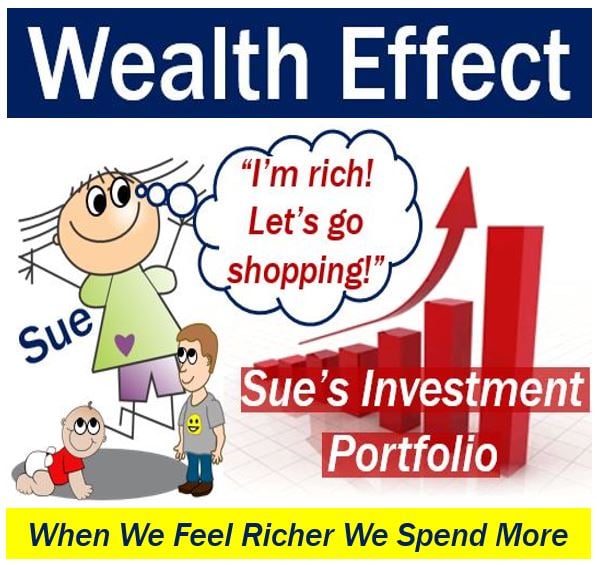Most people find the pain of losing wealth exceeds the joy they get from gaining. While consumers feel more financially secure and confident they spend more freely, the reverse is also true. Get ready for the "reverse wealth effect" to kick in. If this happens it will be a real ball breaker. The wealth effect is a behavioral economic theory based on people spending more as the value of their assets rise. Even decades after its economic bubble popped, Japan stands as a monument to the devastation the reverse wealth effect can unleash.
The complacency that has developed from years of markets moving ever higher has insulated huge numbers of investors from the reality bad times may be in the cards. In addition to complacency the market is being supported by the idea the moment any bad thing happens the Fed will pivot. In such a situation the expectation is the Fed put will kick in. This translates into it might be better to tough out a drop because it may not be possible to get back in when the market V bottoms out of the drop.
Higher for longer is a force that has yet to play out. The bond markets scream caution. The mixed signals flowing from the debt market have left open the possibility the bond markets could become a wrecking ball. This would result in the FED being forced to intervene and the potential for a debt death spiral. We must not forget that for over a decade, super low or negative
interest rates forced people to invest in stock markets in search of
yield. As this money is pulled out of stocks and returns to safer
alternatives stocks may decline striping people of their paper gains.
Circling back to the crux of this post, much of the rationale behind QE has been that it creates what the Fed calls a “Wealth Effect.” For years this has been a key driver of central bank policy. This view is firmly embedded in the macro-econometric models used by the Fed. The notion, widely adopted by central bankers, is that by inflating asset prices to make the wealthy (the asset holders) even wealthier, these people will spend more of what they see as free money from asset price inflation. The premise is that this additional spending will create additional demand for goods and services thus providing jobs for the masses.
Sadly, several times over the years the wealth effect
formula has slid off the tracks and most likely will again. Consumption
does not create wealth, it creates debt. The example that stands out in
the minds of most people is from back in 2008. By loaning
money against homes with little scrutiny as to the borrower's ability to
repay them the Fed created a financial bubble with broad implications. It
could be argued that since 2008, Fed policy has never really addressed
that mess but attempted to paper over it by printing money and expanding
debt through quantitative easing.
In a world where optimism and hope have dominated the investment landscape for over a decade, we should be prepared for reality to raise its ugly head. This time is not different and debt does matter. As pointed out by many economists over the years, low-interest rates and easy money, do not always result in a strong vibrant economy. Japan's failure to recover from its bubble bursting decades ago remains proof of this.
The problem is that the policy track we have been on may of driven consumer buying, but it also created a lot of debt and waste. This has been great for certain sectors of the economy such as the financial sector but it has failed to generate the kind of growth that makes an economy strong.
 |
| Wealth Effect Policies Have Failed To Generate Enough "Real Growth" |
Looking back throughout history we see the policies that breed the Wealth Effect can slide off track or lose their effectiveness while creating risk. At some point, the combination of easy-to-borrow money at low-interest rates tends to morph into a high-risk environment of increased speculation and leverage. In short, savers and investors seeking a return on their savings are forced out of traditional accounts because such investments get ravaged by inflation.
 |
| Many Consumers Bought Into This |
We must not forget the 2008 financial crisis resulted in the worst economic disaster since the great depression of 1930. It is also referred to as the global financial crisis (GFC). It should be noted the Fed's response to the GFC has gotten a great deal of well-deserved bad press for driving inequality and fracturing society. Since 2008 it has become apparent the Fed has created an unfair system that is broken, unfair, and corrupt. This has affected different generations in rather specific ways.
The amount of debt generated since 2008 screams that wealth effect policies are not working. Not only have they failed to create a healthy economy but they feeding into a self-feeding loop of more debt. Following the GFC the Federal Reserve and the Bush administration spent hundreds of billions of dollars to add liquidity to the financial markets. They worked hard to avoid a complete collapse. They almost didn't succeed. Today we are spending not billions, but trillions of dollars to keep the same corrupt policy moving forward.
Investors should treat the wealth effect with caution because it is susceptible to harsh reversals. Since the GFC, attempt after attempt has been put forth to change the tide, but still, we have watched the middle class shrink. The elephant in the room when it comes to growing the economy is how "the broken window theory" is spun and interpreted. The gist of this theory is that if a window is broken, the subsequent repair expenditure will have no net benefits for the economy. Still, it is not uncommon to see destruction touted as a good thing because it promotes spending.
In truth, the
broken window idea of destruction is good discounts several
facts. One has to do with where the
money is coming from but whether it is from an insurance company or
someplace else, it still means the money is diverted from being used on
another
purchase. Repairing
a broken window is maintenance spending which doesn’t improve growth
because it doesn’t improve productivity. This expenditure would have
occurred anyway.
The only thing a broken window does is cause maintenance spending
to occur earlier and lower the useful life of the window. Maintenance
spending may keep the economy going it doesn’t provide a
boost. Instead, it is better to invest the money in something which
creates wealth by increasing productivity.
Many people and even economists have real misconceptions as to how
the economy works. Where money flows and who it enriches is a key component of economics. This is a blind spot many people have. Years of being told everything revolves around
spending has diminished the important role savings plays in the scheme
of a balanced economy. Fans of Keynesian economics that encourage government spending to
stabilize the economy during a downturn tend to discount the importance
that where and how money is spent matters a great deal.
 |
| Wealth Effect Policy Has Flaws |
Bubbling up to the surface is the recognition the Fed has to shoulder a huge responsibility in pushing inequality higher. Powell has even gone so far as to claim there was little demand for loans below $1 million. Sadly, the same policies that dump huge money into larger businesses because it is an easier and faster way to bolster the economy give these concerns a huge advantage that devastates its smaller competitors.
The long-term
ramifications of destroying smaller businesses hurts America in the
long run. It eliminates competition, reduces opportunity, and over time
fuels inflation. This drives my angst directed at companies such as
Amazon and big tech. The policy of making people feel better so they
spend more than they can afford is part of voodoo economics. It has sent jobs abroad and increased our consumption of imported goods resulting in massive trade deficits. Good economic policy encourages personal responsibility and is rooted in saving not spending. Consumption does not create wealth, it creates debt.
(Republishing this article is permitted with reference to Bruce Wilds/AdvancingTime Blog)
"is a behavioral economic theory based on people spending more as the value of their assets rise"
ReplyDeleteWell for me the ONLY THING that has an impact on my spending is my income. On my planet income = purchasing power and asset value rising is capital protection. And how does one spend more when an asset is worth more? Borrow against it?
That "theory" is so silly only an academic or an "expert" could think it up, IMHO.